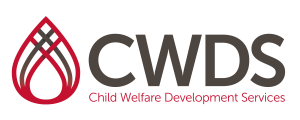CWDS Curriculum
Trauma Exposure and Response in the Workplace
Level: Advanced Practice – (Lineworker, Supervisor, Manager)
Credits: 6
Intended Audience: This course is intended for child welfare staff and/or anyone who works in the field of child welfare
Description of Course: Helping professionals are exposed to tragic content on a daily basis. After days, months, and years of hearing, often graphic, stories about death, abuse, and maltreatment the body begins to feel the impact. For more than a decade now, terms such as Secondary Trauma, Vicarious Traumatization and Compassion Fatigue have been incorporated into the common vernacular. This training, however, will attempt to personalize these terms, explain their differences in detail, help raise awareness of early warning signs, and offer strategies to counter the sometimes debilitating effects on professionals. This didactic training offers mini lecturettes, experiential learning opportunities, skill application exercises, and related video content.
Intended Objectives:
- Define Primary and Secondary Trauma, Vicarious Traumatization, Compassion
Fatigue, and Trauma Stewardship - Identify four key strategies to avoid re-traumatization of co-workers, family, and friends
- Distinguish elements of formal debriefing from informal debriefing
- Demonstrate knowledge of and practice applying the principle of Low Impact Disclosure
- Participate, score and discuss application for the Compassion Satisfaction Survey
- Identify warning signs of Vicarious Trauma, Compassion Fatigue and Secondary Trauma
- Identify self-care strategies and develop a personal warning scale
- Identify early signs and symptoms of VT, CF, and ST in clients and families
Topics Include:
- Symptoms of Traumatic Stress
Definitions - 4 key strategies to avoid re-traumatizing
- Low Impact Disclosure
- Compassion Fatigue
- Trauma Stewardship
- Warning Signs
- Self Care Strategies
Worker Retention



